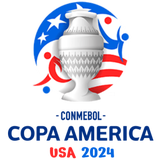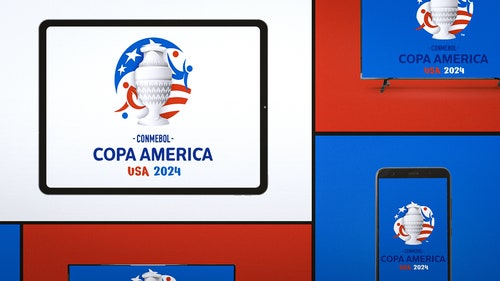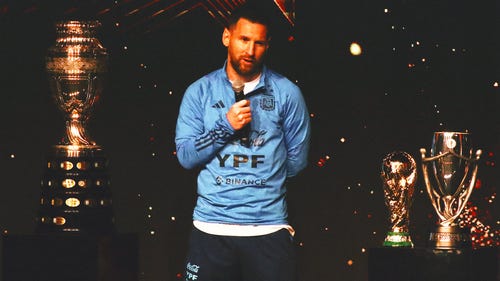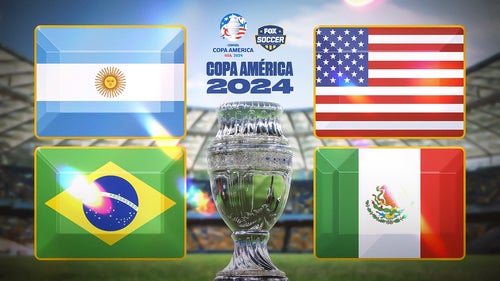[ad_1]
Doug McIntyre
Soccer Journalist
The history of the U.S. men’s national team dates back more than a century, and even with a 40-year drought between World Cup appearances mixed into that lore, the Americans have still participated in soccer’s premier event 10 times.
The USMNT’s history in the Copa América is shorter. All four of the program’s appearances have come since 1993. Their fifth arrives in just a few days, as coach Gregg Berhalter’s squad hosts the best teams in the Western Hemisphere in sport’s longest running international tournament.
To help us prepare for USA 2024, FOX Sports spoke to six former U.S. players — Berhalter, Alejandro Bedoya, Jonathan Bornstein, Brad Guzan, Tony Meola and Tab Ramos — who were members of Copa América rosters past and kind enough to share their experiences.
Ecuador 1993
Much like the current U.S. team, the Americans used the 1993 Copa América to help them prepare for a fast-approaching World Cup at home. Unlike this year, then-coach Bora Milutinović was missing a number of key players who had just competed in the U.S. Cup, a friendly tournament in which the U.S. stunned England 2-0. One week later, a different U.S. team made the country’s Copa debut in a hard-fought 1-0 loss to Uruguay. Ramos was the captain.
Tab Ramos: It’s hard to believe now, but our players looked at the U.S. Cup as the more important competition at the time. Some of the guys didn’t really know much about Copa América. They didn’t know the magnitude of it.
Tony Meola: I have family in Argentina, so I knew how big it was. I knew what it meant to Colombia or Brazil or Uruguay.
Ramos: In general, most of our guys treated it as just another tournament, an opportunity to showcase themselves. It was a little bit of a tryout. We still had college guys on that team.
The U.S. lost its second game to the host nation, ending any chance of advancing. But they were up 3-0 over Venezuela in the group finale before settling for a 3-3 tie.
Ramos: We’re playing in South America, against South American teams, in games you have to win. We saw an intensity that we weren’t used to seeing. Back then, Venezuela was the worst team in CONMEBOL, and yet they fought back to tie us. It was a real eye-opener.
Meola: Bora’s big thing was making sure we’d never be in awe of meeting a team at the World Cup for the first time, so he wanted to play everyone. It did kind of take away the mystique of playing against some of these teams. That helped quite a bit in 1994.
Ramos: I wish we had represented ourselves better, but in 1993 we were still getting our feet wet at the international level. The U.S. Cup was really our only major competition. We had big results, but they were friendlies. Teams didn’t take us seriously until we knocked Colombia out of the 1994 World Cup. That was really our first legit win, the first time we earned a little bit of respect by winning a game that really mattered. But the summer of 1993 was a turning point. After that, we became a competitive national team worldwide.
Meola: For me, and I think the guys in ‘95 will tell you the same thing: It’s as close to being in a World Cup as it gets.

Tab Ramos of the United States attacks during the 1993 Copa America in Ecuador. (Credit: Shaun Botterill/ALLSPORT)
Uruguay 1995
The U.S. returned to the Copa América as a battle-tested side. The Americans had reached the second round of the World Cup a year earlier before losing to eventual champ Brazil. They played with no fear, routing Argentina 3-0 in the group stage and advancing to the semifinals, where Brazil once again eliminated them with a 1-0 victory.
Ramos: The feeling was completely different in 1995. Now we knew the magnitude of Copa América. We wanted to have the best team we could have.
Gregg Berhalter: I had two caps coming into the tournament, so it wasn’t like I was a main part of the team. I viewed it as an amazing experience for a young player. I looked up to a lot of the older guys who had starred at the World Cup the year before.
To see the intensity we brought and to compete the way we did, it was really special. We had a lot of confidence. I remember specifically the performance Alexi Lalas and Frank Klopas had against Argentina. It was a great group to learn from and just a fun ride — that’s the best way to describe it.
Ramos: By 1995, all of our players were playing on clubs somewhere overseas. We knew — and I’m gonna say this with a straight face — that we could beat anyone. We might have to get lucky, but we could beat anyone.
Berhalter: Maradona came to watch the game before ours, and he sat down in the seat right in front of me. He saw our tracksuits, turned around and shook our hands. Within five minutes the entire stadium was chanting his name. It’s one of the best experiences I ever had in soccer.
To go out and beat Argentina 3-0 is an amazing accomplishment. That’s a marquee win in the program’s history. The American spirit shined through in that tournament.
Venezuela 2007
The U.S. returned to Copa for the third time as an invited guest. But most of the regulars didn’t go after helping the Americans beat Mexico in the Concacaf Gold Cup final, which was played in Chicago three days before the 2007 Copa kicked off. Left back Jonathan Bornstein was one of the few players who competed in both events. The U.S. opened the tournament with a 4-1 loss to Argentina and a youngster named Lionel Messi, who had just turned 20.
Jonathan Bornstein: The Gold Cup roster was pretty much all European-based. But the European players needed to go back to before their seasons, so that Copa America squad was a majority of MLS guys.
Brad Guzan: It was more or less a completely different group.
Bornstein: Everybody was aware of Messi, but there were a lot of very high quality players on Argentina: Carlos Tevez, Javier Mascherano. I can still remember the intensity with which they passed the ball. It was like nothing I’d ever seen. I remember a really hard driven ball into [Juan Román] Riquelme, and he just cushions in front of him like it was like a soft pass. Just the speed and the pace at which they did things, it was another level. I was like, ‘Damn, that’s how I have to play.’ It was a great learning experience for the entire team.
It was an experience off the field, too. Political relations between Venezuela and the U.S. had deteriorated significantly in the years before that edition of the Copa América.
Bornstein: We weren’t very welcome. We always had to have security with us. For our safety, we couldn’t leave our hotel compound. When we would drive from the hotel to the practice field, we’d have a helicopter overhead with soldiers holding machine guns leaning out the door. That’s the thing I remember the most.
Guzan: The helicopter was only 100 feet above us. We had a decoy bus, we had Humvees in front and behind, had to take different routes to training. The training pitch was surrounded by armed soldiers. It was wild.
The U.S. narrowly lost its next two games, to Paraguay and Colombia.
Bornstein: We might not have been playing in Europe at the time, but we were quality soccer players representing our country. I remember Bob [Bradley, the U.S. coach] mentioning, like, ‘This is the team that was chosen, and this is the team that’s got to get the job done.” That was the mentality of the group, even if we didn’t get the results we wanted. The last two games we were in. If a couple of bounces had gone our way, for sure we could’ve gotten points out of them.”

Paraguay’s Edgar Gonzalez (C) vies with United States’ Taylor Twellman (L) and goalkeeper Kasey Keller during their Copa America 2007 first round match in Barinas, Venezuela in 2007. (Credit: YURI CORTEZ/AFP via Getty Images)
USA 2016
To celebrate the 100th anniversary of the inaugural Copa América, CONMEBOL and Concacaf joined forces to organize an expanded 16-team event to be hosted in packed NFL Stadiums across the U.S.
Bedoya: It was special to play in that Copa América Centenario. I grew up in a Colombian household, and we always watched the Copa. Colombia won it in 2001, when the tournament was held there. My family was so happy. After the World Cup, it’s the biggest trophy there is for South American teams.
Guzan: It was exciting to be part of a Copa América again. Hosting it added another element to it.
The U.S. dropped its opener to Colombia, then reeled off victories against Costa Rica and Paraguay to top the group. That set up a quarterfinal with Ecuador in Seattle, which the home team won 2-1.
Guzan: The pitch wasn’t great. It was super heavy. That said, we were up for it. We knew we put ourselves in a perfect spot to get a big result, and we did. It was a fantastic day for U.S. Soccer.
The only downside? Bedoya and fellow midfielder Jermaine Jones were suspended for the semifinal against Messi’s Argentina.
Bedoya: That’s one of my biggest regrets. I wish me and Jermaine were available for that Argentina game, because we all know what happened.
The shorthanded U.S. lost 4-0. Messi opened the scoring early by beating Guzan with an inch-perfect free kick, and Argentina never looked back.
Guzan: It’s not every day you have someone who can get the ball up and over the wall and still have it move away from you into the top corner. You’re trying to allow the wall to do its job and not cheat. Obviously, he scored. But I’m not sure we even touched the ball during the first 20 minutes of that game.
The defeat sent the Americans to the third place match, where they again faced — and lost to — Colombia.
Bedoya: It’s not a final, but it’s still a match you want to win. You want to finish as high as possible. I grew up cheering for the Colombian team. It’s a special game for myself and my family. But I represent USA. I’m American. So yeah, I definitely wanted to win the third place game. Unfortunately, we fell short again. But overall, we had a good Copa América. I thought we played pretty well given the opponents we faced.

Lionel Messi of Argentina dribbles the ball against Michael Bradley of United States in a 2016 Copa America Centenario semifinal match on June 21, 2016 in Houston. (Photo by Scott Halleran/Getty Images)
Doug McIntyre is a soccer writer for FOX Sports. Before joining FOX Sports in 2021, he was a staff writer with ESPN and Yahoo Sports and he has covered the United States men’s and women’s national teams at multiple FIFA World Cups. Follow him at @ByDougMcIntyre.
recommended

Get more from Copa América Follow your favorites to get information about games, news and more
[ad_2]
Source link








